Have you always wanted to grow plants at home, but arenÔÇÖt sure where to start?
Presenter and community gardener, Tayshan Hayden-Smith, shares his top tips for green-fingered families with 91╚╚▒Č Bitesize ParentsÔÇÖ Toolkit. What tools do you really need? Which plants are great for small spaces? And which plants are best for getting kids into the kitchen?
Watch the film below to find out moreÔÇŽ
Who is Tayshan Hayden-Smith?
Tayshan is a presenter, footballer and community gardener, born and raised in North Kensington, London.
After the Grenfell Tower disaster in 2017, Tayshan decided to use gardening and nature to empower young people and bring comfort to his community in the area surrounding the tower. He soon became known as the ÔÇśGrenfell Guerrilla GardenerÔÇÖ.
Tayshan shared his top tips for growing at home and in small spacesÔÇŽ
What tools do you need to start gardening?
Walk into any garden centre and you'll soon be overwhelmed by a treasure trove of gadgetry. But what do you actually need to get started?
Here are the basicsÔÇŽ
Soil or compost (peat-free is much better for the environment)
Pots for your plants to live in, if you'd like to grow indoors, or don't have access to a soil bed
Seeds or a young plant
Water
You might be more comfortable wearing gloves when you and your child use your hands to plant seeds, but Just remember to wash your hands when you're done.
If you'd like to help your child feel the part with a handy gardening tool, then Tayshan recommends a small hand trowel, or even a spare teaspoon to help them make holes in the soil for seeds.
Five plants to grow with your family
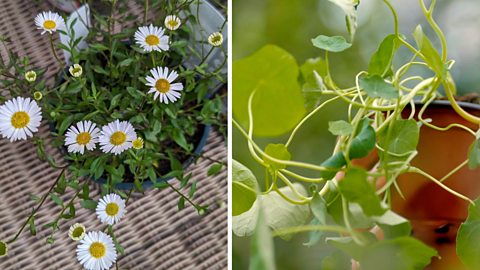
Thyme - A sun-loving herb that can flourish on a windowsill or balcony - you don't need a garden. It's also a great one to have around for adding a bit of extra flavour to your meals - Tayshan particularly likes it in Caribbean dishes. Best of all, bees and pollinators love it!
Chamomile - This one is for the tea lovers! Chamomile tea can be made by steeping the flowers, which often grow in early summer, in boiling water. The fresh scent and low maintenance of chamomile also makes it a great alternative to grass for your lawn, if you have access to one.
Nasturtium - This plant trails playfully from any pot or planter and blooms colourful flowers, so plant it somewhere in plain view. But, it's real secret is that you can eat every part of it - from the young seed, to the leaves, to the flower! They have a bold, peppery flavour, not unlike rocket leaves, that can add a bit of punch and colour to your salads. Plant this one in early spring to see you through until first frost.
Spring onions - You don't need a big patch to start growing your own produce. Spring onions can be grown in a window box or individual pots, as long as they have enough space underneath them to grow into. Once you've harvested your first crop, save the white ends, as these can be used to grow brand new onions!
Erigeron - Also known as Mexican fleabane, this is one of Tayshan's favourites. Erigeron is related to the common daisy, which is very apparent based on its appearance, and just like its cousin it can grow almost anywhere - including cracks in pavement and brick walls - so it's perfect if you're working with a small space. If you have a garden, they'll happily self-seed and bring colour to every corner of your space.
Tayshan's tips for your family
If youÔÇÖre unsure about getting into gardening or growing at home, think about the lessons that plants can teach your child ÔÇô helping them to understand ideas from the cycles of life - seed, to flower, to fruit - to where their food comes from. As well as this, it can also help them to grow a sense of appreciation and wonder for the natural world, which can help with mindfulness and mental health in later life.
But how can you keep your child interested in the long-term?
Set an alarm for ÔÇśplant timeÔÇÖ.
Just set aside a few minutes every day to check up on what you have growing, top them up with water and prune dead flowers. Make it part of your routine!
Use a magnifying glass to watch the tiny changes in your plants.
Most plants develop slowly and take a long time to reach maturity, but using a magnifying glass, or even your the zoom function on a phone camera, can help your child see that their actions are having an impact.
Let your child pick out seeds or young plants for your home.
When you head to the supermarket, garden centre, or are picking out options online, be sure to let your child choose one or two for themselves, alongside your picks. Their choices might be less sensible, or a bit more difficult to grow successfully, but itÔÇÖs a learning experience - and what better way to spend time together?
If you'd like to know more about seeds, this episode of Gardener's World explains how they work.

More from 91╚╚▒Č Bitesize Parents' ToolkitÔÇŽ
Parents' Toolkit
Fun activities, real-life stories, wellbeing support and loads of helpful advice - we're here for you and your child.

Personality quiz: Which minibeast are you?
"Am I a worm or a woodlouse?" If you've ever asked yourself this question, this is the quiz for you.
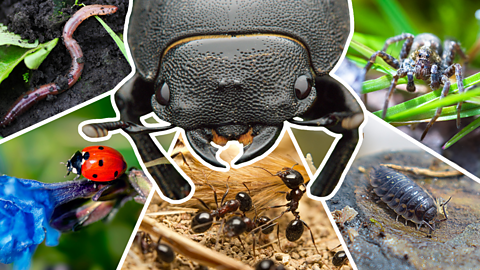
Quiz: Learn to spot UK birds using their songs
Help your child learn how to identify British garden and woodland birds from their songs and appearance.
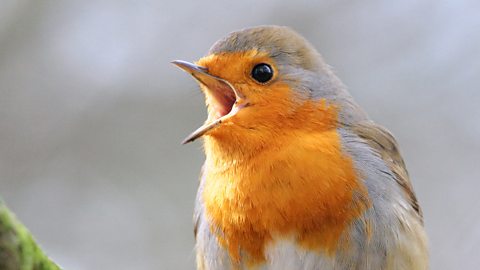
Why playing out and exploring is good for our kids
Steve Backshall, Helen Glover and child psychology expert Helen Dodd have some advice for parents.
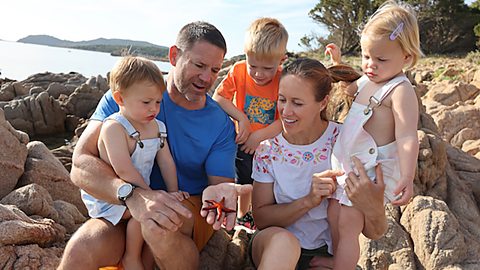
What kids can learn by looking after plants
Tiny Happy People and expert Raoul Lindsay explain the benefits of gardening with children.
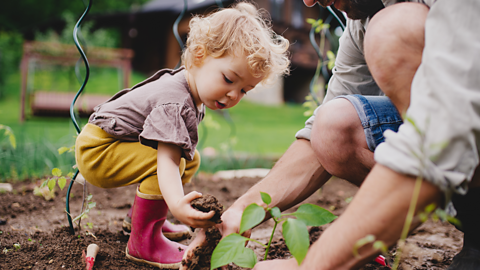
More activity ideas
Fun activities to keep your child busy and curious about the world around them.
